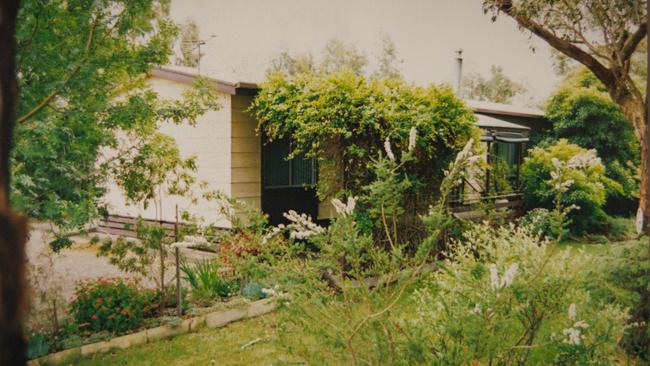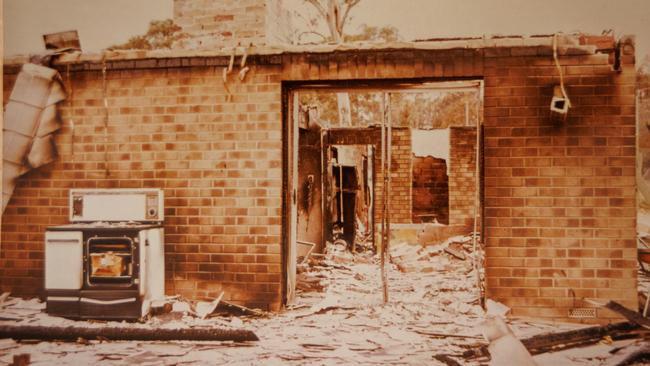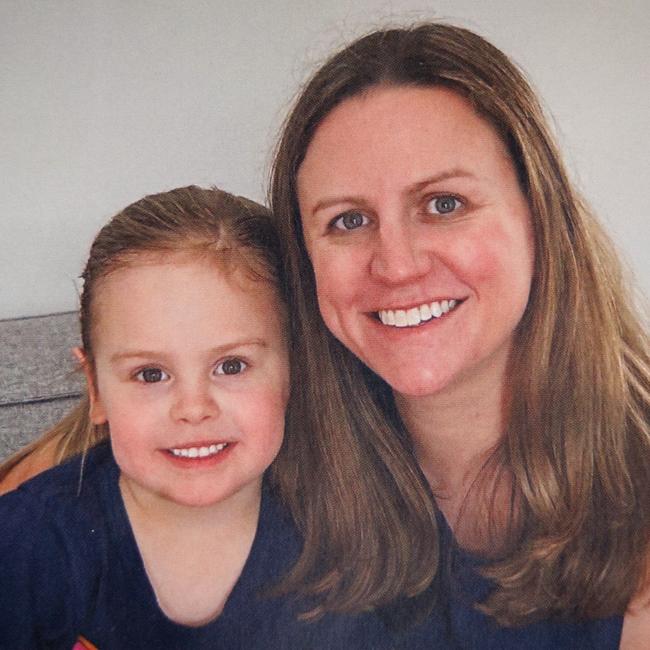How a family was born in the wake of a devastating fire
They lost their home in the 1983 Ash Wednesday fires. Just a few days later, Vivienne and Ian Kroehn were expecting their first child. What happened next?

Stories don’t end when they hit the news. For The Australian’s 60th birthday, Fiona Harari retraces a story for each of the past six decades. See the others here.
Vivienne Kroehn’s shopping list of essentials was short, and in retrospect, not overly considered.
As fires charged towards her Adelaide Hills home on a searing summer morning in 1983, she tossed a decade-long marriage’s worth of photos and files into her car, plus a small suitcase with a multitude of nighties but not a single jumper.
Mostly, though, she thought about the baby she was carrying and who was due to arrive in the world that weekend. “That was precious,” she says now, 41 years later. “And my decisions of what I was doing, when I was leaving there, I had to think about the fact there was a new life happening.”

Due four days after the Ash Wednesday fires that were tearing through South Australia and Victoria, Ms Kroehn’s first child was the reason she also threw a borrowed baby basket into the back of her car, as well as a half-completed crocheted baby shawl and the train of her wedding dress that she was hoping to make into a christening gown.
Only as she fled her home, leaving behind the nursery she had finally and lovingly arranged the previous night, did she realise how precariously disastrous her timing might have been.
“When I drove down the driveway, I realised I should have prepared better and gone earlier. There were balls of fire just rolling in the paddock in front of our place.
“I got on the road all right but I realised I had put our lives at risk.”

Ms Kroehn, then 31, had been married to South Australian footballer Ian Kroehn for 11 years by that summer, creating a new home on a 2ha block with a sloping paddock at the front and kindly neighbours to the side. Happily enmeshed in the village community of Hahndorf, their full-brick house, with its surrounding gum trees, seemed a lot further from civilisation than the 40-minute commute to Adelaide suggested.
Born in rural South Australia, Ms Kroehn loved nature and understood its extremes. “I remember my father telling us if a fire came, where we would have to shift the cattle – a safe place for the cattle.”

But just before her due date, she woke to a world that was changing by stealth. With a brutally hot day predicted on Wednesday, February 16, she had stayed up late on Tuesday evening packing a bag for the hospital after arranging the baby’s room.
Late the next morning, having slept in, she was reading the paper in bed when ferocious winds started whipping through the area, blowing in a window.
Within minutes, elderly neighbour Peter Gaskell, with whom the Kroehns shared a long driveway, had nailed it back in place, but by then smoke was engulfing the region and the town’s sirens were summoning local volunteer firefighters: “Suddenly the realisation is, this is bad.”
The few hours that followed were both rapid and detailed. By lunchtime, she saw smoke over the hill. Alarmed, she phoned her husband to return from work in Adelaide immediately. She also hurriedly packed her car.
The fire was massive, furious, and fast. By the time her husband drove into Hahndorf at 1.30pm, Vivienne Kroehn had parked her car, and the vestiges of their shared life, outside the local German cake shop. In the absence of a designated safe space, this spot in town felt as protected as anywhere.
“I was really worried but I think being pregnant there was a calmness about it,” she said.
Ian Kroehn was at their property within minutes and saw the roof explode. By 2pm, their home was razed, and so was almost everything they had amassed over a decade.

In a stroke of luck that would have consequences much later, volunteer firefighters were able to save their neighbour Peter Gaskell’s home, although its wiring had melted. In the blackened landscape, his house became an enduring symbol of the ferocity of the inferno and its fickleness.
That night the Kroehns stayed with friends and their four daughters at their nearby home, where they would find refuge for the next three months.
The following morning, they drove up their long drive to see what remained of their old lives.
As they wandered around the piles of ash and rubble – as stunned that a coffee set had melted into a silver ball as they were to uncover several pieces of bone china crockery that had survived – they were snapped by a photographer. The picture was published in The Australian on Friday, February 18.


The fortnight that followed was a mess of survival and routine. Vivienne Kroehn remembers arriving at a doctor’s appointment, her husband having to attend in bare feet because his shoes had broken and in the madness he had not found time to buy a pair of thongs.
“You poor bastards,” she remembers the doctor saying, before lamenting that he could not induce her. “And I said: ‘You’re kidding. I’m too tired.’
“I couldn’t have had a baby then. I was too exhausted.”
At that dramatic time, she experienced a bewildering mix of loss and excitement. “You’re so fragile,” she says. “But I felt we were better than some couples because we had this new life to look forward to.”
On March 2, 1983, 10 days late, to the delight of her extended family and as floods hit the nearby Barossa Valley, Amanda Meredith Kroehn was born in an Adelaide hospital.
“The joy of her arrival I’m sure helped us through,” says her mother, who is now 72. “I was really so lucky staying with someone who had four children … She had lots of hugs.
“I think there’s something in that, in being a contented baby.”
Amanda was born homeless, but also enveloped in the best of humanity. In the busy shared house to which she arrived from hospital, there were cuddles aplenty and love. She slept in a donated cot, and later, when she moved with her parents temporarily into a donated holiday home, her nursery was filled with gifts of furniture.
For her christening, a friend completed the gown that her mother had rushed to save from the fire.

“This was the most beautiful thing about it. People were so generous. Baby clothes were arriving. Someone gave us a lounge suite,” said Vivienne Kroehn.
Local women provided maternity outfits. Footy club members helped to demolish what remained of the family’s home and then cleared the site for rebuilding. A friend left $500 in an envelope inside the baby’s empty bassinet.
By the time Amanda was a year old, her family’s house was rebuilt. The old footings were salvaged and strengthened, and with a new emergency water pump and automatic sprinklers installed in the roof, in February 1984 she and her parents drove back up the long driveway and home to Hahndorf.
“We had so much community support helping to re-establish,” said her mother. “But the fact that there was this little person was important to the joy of that.”
That joy was extended in 1986 with the birth of Amanda’s brother Brad, who even as a boy developed a deep affinity with the area and its surrounding hills. As his mother recalls: “He loved it and he said: ‘I’m always going to live here.’ ”
Yet not every story goes to plan. When the Kroehns’ marriage ended after 40 years, they sold their home in 2013. Their family’s history in this bushy pocket of Australia might have ended there.
In the intervening years, however, their neighbour Peter Gaskell had died, and after buying his old house, Vivienne Kroehn ran it as a next-door bed and breakfast for a time.
Now Brad lives there with his partner and two small children, on the other side of the long driveway, with its view across the valley and over to the house that was lost and found and became the setting for his own childhood memories.
With his interior designer sister Amanda, 41, living in Canada with her partner and young daughter, Brad Kroehn is now raising a third generation of his family here – in this place that is an enduring testament to the fact that life goes on.
More Coverage




